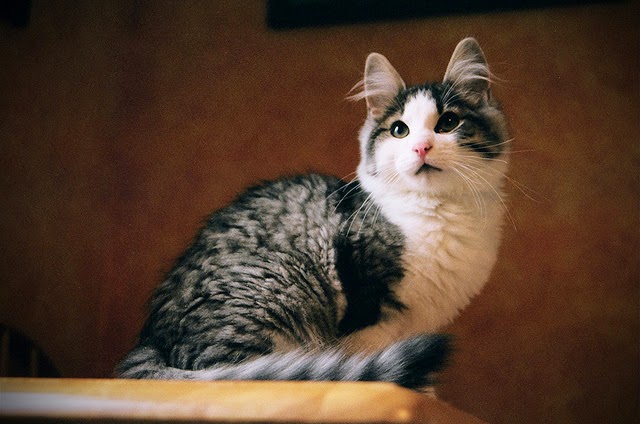Last time I talked about fear of failure. I believe that fear is the number one thing holding most people back, writers especially.
Yes, to be a writer one must write and one must read, but one must do something else as well: one must offer one’s work up to others to be read. (Not everything, to be sure. Sometimes we write a story just for ourselves, or for a friend, or for our family. But I agree with Lee Child that a reader is an essential component of every story. I feel that an unread story is, in some ways, an unfinished story.[1])
Today there are more ways than ever to get our work in front of readers. We can send it to book publishers or we can publish it ourselves on places like Amazon and Smashwords and Kobo and iBooks. Those are just a few of the many markets that have sprung up in the past few years. Writers can also--as I’m doing right now--publish a blog post, or serialize their stories through sites like Wattpad.
Many writers are taking advantage of these publishing opportunities. To those of you who are: great! You are doing the work, facing the fear of failure, of rejection, then getting over it, and putting your work out there. When setbacks come--and of course they will; they come to everyone--you brush yourself off, get up, and keep going. Kudos.
A lot of people aren’t like that. It’s not that they aren’t brave, it’s that the sting of past failures, still clear in their minds, paralyzes them; it prevents them from acting and risking failure. And that’s a big problem because to succeed at anything one must risk failure.
The power of writing.
Why do we write? Why do we sequester ourselves from our friends, our families--from the outdoors! From fresh air and family picnics and Saturday night movies and drinks after work with friends. Why do we live like moles in underground warrens--writer’s caves--bathed in artificial light?
Why do you write?
There are going to be all sorts of different reasons but I think that most writers write because they want to create stories that have the power to entertain, that have the power to reach out and connect with the hearts and minds of their audience and make them feel something.
It is a kind of magic. Consider this sentence:
“I’m thinking of a white rabbit.”
And now so are you!
In reading those words, words I wrote, I influenced your thoughts.
People who are both skilled and clever at writing can transform lives and change the course of history.
That sounds like an exaggeration but think how different the world would be without the Torah, the Christian Bible and the Koran. I’m not saying anything about how the world would be better or worse--that’s an entirely different post--but it would certainly be different.
When my father first told me that the pen was mightier than the sword, I scoffed. But swords are wielded by people, and people have ideas and thoughts and beliefs and desires, all of which can be changed by what they read; all of which can be changed by the stories that live inside them.
The stories that live in us, the stories that we tell ourselves, are what shape our lives, are what shape what is possible for us. These stories determine what we will attempt, what we will risk, what we will try.
My point is that, as writers, as creators of stories, we have a lot of power.
To be a storyteller is a heady goal.
And, perhaps for that reason, perhaps because the end result is so potentially powerful, there is a bar to entry: the fear of failure.
The boogyman.
We all fear something (though probably not the same thing!). Many writers, though, have two fears in common:
Writers often fear that not only will their work, their stories, be cruelly rejected but that, as a result, they will be rejected as well.
The fear is that our friends will laugh at us behind our backs, that our families will be disappointed in us. The fear is that, because of our story’s failure, we will amount to less.
For many of us, this fear has its root in having been bullied. This is the fear of someone tearing us down, ridiculing us, perhaps even beating us up, all because doing so makes them feel good. It is all because diminishing us makes them feel bigger, better.
But let’s examine this fear, let’s shine a light on it. Let’s take an objective look at what failure could mean for a writer.
The upside of failure.
Failure, like death, is inevitable. We will fail at something. Probably many somethings.
Failure can be devastating:
If brakes fail to work properly, people can die.
If a surgeon fails to hold his scalpel steady, his patient can die.
If a parent fails to care for their children adequately, they can die.
If a writer fails to sell a book--if the book fails--then ... what?
Well, no one is going to die.
(Note: In what follows it may seem as though I’m saying it’s okay to be sloppy, it’s okay to publish a book that hasn’t been proofread, it’s okay to offer a book for sale before the author has solicited feedback from beta readers. I’m not saying any of those things. Every book published should be the best the author can possibly make it.)
Ask yourself:
What is the worst thing that can happen if you publish your story or send it off to a traditional publisher?
One thing that could happen is for a reviewer to leave a scathing one star review that goes beyond criticizing the story--which is fair--to criticizing the author--which isn’t fair--and doing so in a way that is intentionally destructive.
I know a lot of people experienced bullying when they were kids and, unfortunately, even as adults. A person does something someone else finds weird or strange, something that--to them--is objectionable, and instead of limiting their criticism to what you did they criticize you.
Perhaps you’re worried that if you publish a book that sucks that your friends and family--and even complete strangers--will tell you you’re hopeless, you’re a joke, you’re a terrible person. Perhaps you’re scared that you’re going to lose all your friends. No one will like you or respect you or listen to you anymore.
The fear of being abandoned by those we care about most, the fear of losing all you hold most dear, is often what lies at the heart of the fear of failure. And the fear doesn’t have to be rational. I once watched an interview with a billionaire in which he confessed that he was still terrified of losing all his money and being homeless. As he said this there were tears in his eyes. Is that likely to ever happen? No! But it doesn’t matter. That’s the fear that drives him.
Our fears are often wildly unrealistic.
For the sake of argument, let’s say you publish--or send to a publisher--a book that sucks. Let’s say you wrote the worst story ever. Yes, you checked the manuscript for grammatical errors but you missed them. To make matters worse, you describe your story as an action/adventure when it’s really a confused romance, and the story question--whether the protagonists will become a couple--is never answered. Or maybe it’s just terribly boring, better than warm milk at putting readers to sleep.
What is the worst that could happen?
A. Readers download the book, perhaps it was free and they didn’t bother looking at the first few pages. They begin to read, realize it’s a horrible story badly written and either leave a disgruntled review or just close the book and never look at it again.
B. Readers are so upset that they waisted time on the book that they leave scathing one star reviews that skewer not only the work but the author of the work. Not satisfied with this, they stalk the author and leave one star reviews for all her books without even reading them.
If either (A) or (B) happens, so what? (Again, I’m not advising people to publish sloppy work, I’m just looking at a worst case scenario.)
Chances are no one is going to remember your name (and, if you’re really worried, you can publish under a pen name). I have trouble remembering the names of authors whose books I DO want to read, I don’t have any brain-space left over for authors who I don’t want to read, nor do most people.
(B) is probably not going to happen. I would say you have a better chance of being struck by lightening or winning the lottery. Yes, there are some authors who some people love to hate but these authors are usually successful. I’m writing this post for people who want to share their work with a larger public but who haven’t yet because they are afraid of what the price might be, not those who are experiencing some of the drawbacks of success.
What is the best thing that could happen?
This isn’t at all likely, but look at what happened to Hugh Howey. That sort of success didn’t happen right away, he published many books before he made it big with Wool, a story he thought wasn’t going to sell well. Because of Wool he was able to quit his day job and become a successful full-time writer.
What is most likely to happen?
If this is your first publication and you have no presence on the web then even if you publish an awesome story chances are it won’t sell and you won’t receive any reviews.
If you do have a presence on the web, even a modest one, or if you do some promotion, then you likely will get some downloads and, if it’s a terrible book, you may get a few reviews like (A) above. The good news, though, is that there are many ways to ensure your book is not terrible:
- If you have the money, send your book to a content editor, one you’ve researched thoroughly and who is highly recommended. If you don’t have the money, work out an exchange with other authors who write the same kind of books you do. In addition, you can run your story through online critique groups such as critters.org.
- Run your story through a grammar checker. I use MS Word. If you have the money, also send your book to a copy editor, someone who can check for grammatical errors and logical inconsistencies.
- Put the story away for as long as you can stand, weeks or months, and then take it out and read it. You should be able to see it with new eyes and decide for yourself whether it is something you want to share with the world.
Note: There’s a big difference between a story being terrible and it simply not being someone’s cup of tea. For example, I could write the best romance story ever written but if a reader hates romance stories they aren’t going to like it.[2]
It’s easy to do something unskilled that almost everyone loves. That’s porn. It’s difficult to do something that takes skill where the possibility of self-immolating disaster lurks, ever-present, in the wings. Writers are those people who find it in themselves to rise from their own ashes and continue writing.
Notes/Links/References
1. The other day I went through a few of my trunk stories. Many of them had been written so long ago I only dimly remembered writing them. I think that when we write a story then put it away for days or weeks or months, or even years, and then come back to it and re-read it we can be almost objective. We come back to the text as a reader not as its creator. Because of this, I think that a writer can be their own reader, their own audience, if they have sufficient distance from the work.
2. There is a reader for every book. Whatever kind of story you write, if you love the story then there are other people who will love it too. The trick is to find them. Further, what determines whether a person can make a living from their writing is how many readers love the kinds of stories you write. I believe that most one star reviews come from people outside a book’s target audience; they come from people who, instead of loving that kind of story, hate it. It is not the fault of the storyteller or the story; the book just wasn’t for them. Given this, if a person (say) makes their work free on Amazon and thousands of people download it, it’s quite likely it will get a few negative reviews--as well as quite a few positive ones. (It’s interesting how writers have the capacity to remember that first cutting one star review till the end of time while completely ignoring all the five star reviews!)
Further reading:
Photo credit: "First Kitten, First Home" by Laura D'Alessandro by Creative Commons Copyright 2.0.










